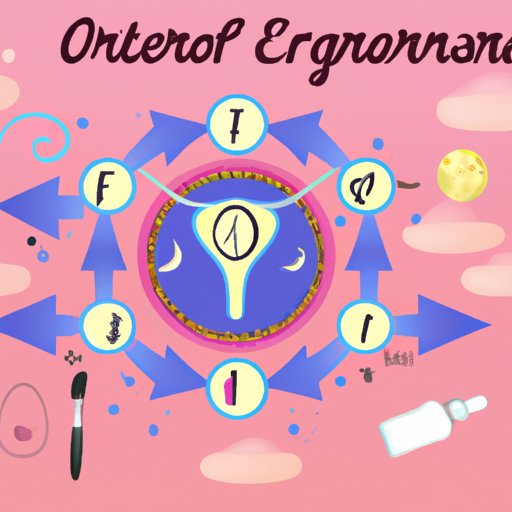Introduction
Trying to determine when is the best time to get pregnant can be a daunting task. Knowing when a woman is most fertile is essential in helping couples increase their chances of conception. In this article, we will explore the science behind the female fertility cycle and provide helpful tips for determining when is the ideal time to plan pregnancy.
Exploring the Fertility Window: When Are Women Most Fertile?
It’s important to understand the menstrual cycle in order to determine when a woman is most fertile. Female fertility is affected by several factors, including hormone levels and the length of the luteal phase. During the menstrual cycle, ovulation typically occurs about 14 days before the start of the next period. This window is referred to as the “fertility window.”
The luteal phase is the time between ovulation and the start of the next period. During this time, the body produces progesterone, which helps prepare the uterus for implantation. The luteal phase usually lasts 10-16 days, with the average being 14 days. If the luteal phase is shorter than 10 days, it can decrease the chances of conception.
There are also other factors that can affect ovulation, such as stress, illness, and lifestyle habits. These can cause hormonal imbalances and interfere with the regularity of ovulation.
The Science Behind Optimal Fertility: What You Need to Know About a Woman’s Biological Clock
Age plays a significant role in fertility. As a woman gets older, her fertility declines due to changes in her reproductive hormones. The hormone estrogen peaks during the early twenties and gradually decreases throughout the thirties. Progesterone production begins to decline in the late twenties and continues to decrease into the early forties.
Hormones play an important role in regulating the menstrual cycle and ovulation. Low levels of estrogen can lead to irregular periods, while low levels of progesterone can prevent ovulation. High levels of prolactin, a hormone produced by the pituitary gland, can also interfere with ovulation.
Maximizing Your Chances of Conception: Understanding Your Fertility Cycle
In order to maximize your chances of conceiving, it’s important to understand your own fertility cycle. Tracking your fertility can help you identify when ovulation is likely to occur. Basal body temperature (BBT) is one way to track ovulation. BBT typically rises slightly during ovulation and remains elevated until the start of the next period.
Ovulation predictor kits are also available over the counter. These kits measure the levels of luteinizing hormone (LH) in the urine, which increases just before ovulation. By tracking your fertility signs, you can determine when is the best time to try to conceive.
A Comprehensive Guide to Women’s Fertility: What Every Woman Needs to Know
If you’re having difficulty conceiving, it’s important to recognize the signs of infertility and consult with a doctor. Common causes of infertility include endometriosis, polycystic ovarian syndrome (PCOS), and thyroid disorders. Your doctor can order tests to determine if there is an underlying medical condition that is interfering with fertility.
In addition to consulting with a doctor, there are natural approaches to boosting fertility. Eating a healthy diet, exercising regularly, and reducing stress can all help improve fertility.

Tips for Planning Pregnancy: How to Determine When is the Best Time to Get Pregnant
Timing intercourse for optimal conception is important. Having sex every other day during the fertile window can increase your chances of conception. Additionally, optimizing diet and lifestyle can improve fertility. Eating a balanced diet that is rich in nutrients, exercising regularly, and managing stress can all improve your chances of conceiving.

Demystifying the Female Fertility Cycle: Strategies for Increasing Your Chances of Getting Pregnant
If you’re still having difficulty conceiving, there are medical treatments available. Common fertility treatments include intrauterine insemination (IUI) and in vitro fertilization (IVF). IUI involves placing sperm directly into the uterus, while IVF involves retrieving eggs from the ovaries and fertilizing them in a lab setting.
For those who prefer a more natural approach, there are supplements and herbs available that can help boost fertility. Herbs such as chasteberry, red raspberry leaf, and maca root have been used for centuries to support reproductive health.
Conclusion
Understanding the female fertility cycle is key for maximizing your chances of conception. Knowing when a woman is most fertile can help couples plan for pregnancy and increase their chance of having a successful outcome. Additionally, understanding the science behind fertility, recognizing signs of infertility, and consulting with a doctor can all help in determining the best time to get pregnant.
By following these guidelines, couples can demystify the female fertility cycle and increase their chances of getting pregnant. With the right knowledge and strategies, they can take control of their reproductive health and create the family they desire.


